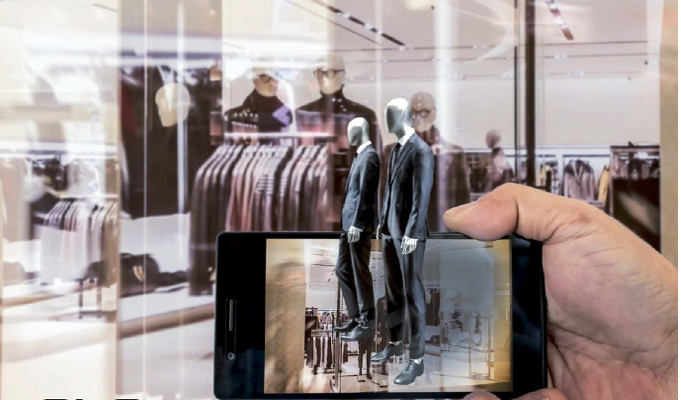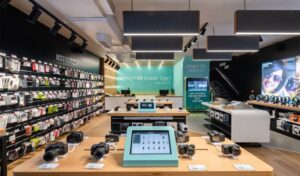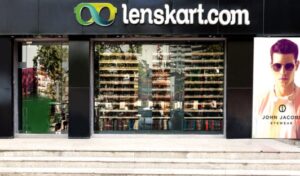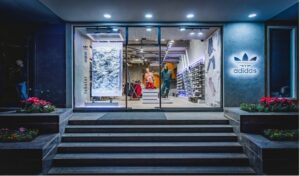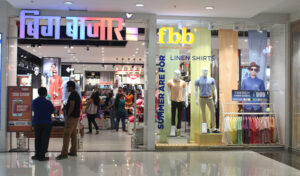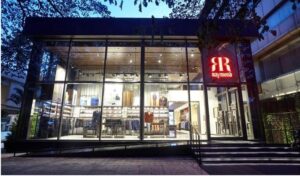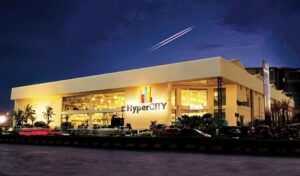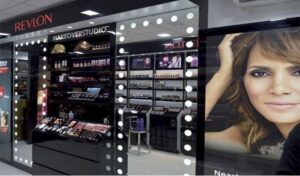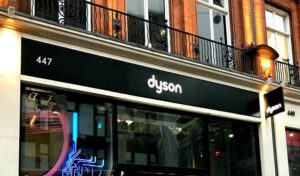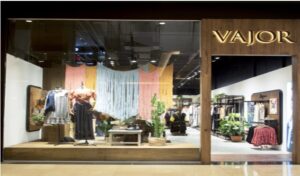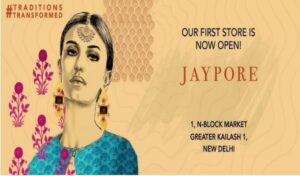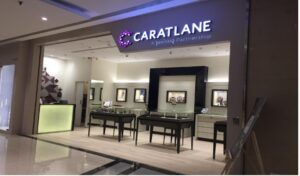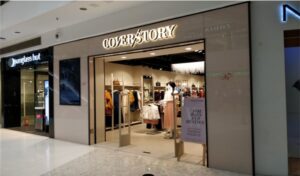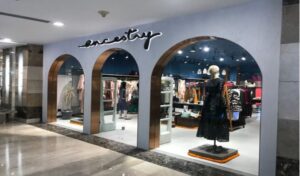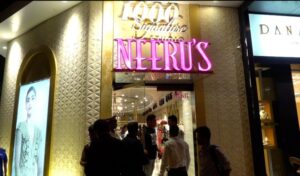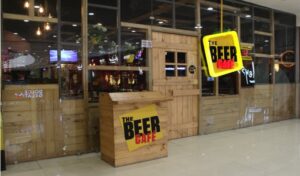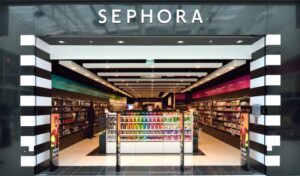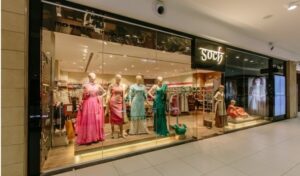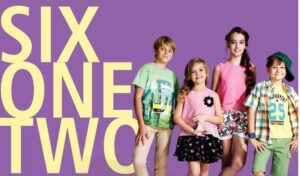2018 promises to be a crucial year for Indian retail. Even as the retail sector welcomes e-commerce with open arms, it is brick-and-mortar which has emerged victorious over the last one year in the country, for after all, while Internet may have penetrated the heart of India, the hearts of Indians (and their trust) still lies with the physical retailer.
In fact, an AT Kearney study states that 95 percent of all retail sales are captured by retailers with a brick-and-mortar presence while two-thirds of consumers who purchase online use the store before or after the transaction.
In order to accommodate the evolving demands of the ever-connected consumer, and lure him in, the physical store needs to change its mindset. Traditional retailers need to consider the power of digital transformation and use it liberally to enhance instore experiences. The brick-and-mortar store needs to go Phy-gital.
So, What is Phy-gital Retail?
Phy-gital refers to a retail environment in which physical and digital experiences merge together seamlessly and complement each other in order to offer the consumer a single, positive, integrated experience.
While modern consumers are actively looking for Omnichannel experiences, offline shopping remains important for a large number of them – especially families. Some like to hit stores out of habit, while others shop offline simply because they enjoy the activity.
The main benefit of offline shopping remains its tangible aspect – the ability of consumers to touch and feel products before buying them. At the same time, they demand the convenience that online shopping offers them. Some shoppers expect the store staff to have intricate knowledge of the product, advise them on their choices, while others prefer to keep it simple, low and with minimal contact with the salesperson. They all, however, want brands to use technology to offer them personalised phy-gital experiences and reward them for their loyalty.
For traditional retailers, the hard fact is that similar choices are available almost everywhere – especially online. They are slowly, but surely, coming to grips with the fact that what matters the most is the experience and services provided by them to their consumers. So, they are using it all to keep consumers coming back, keep their businesses thriving – free Wi-Fi, Augmented Reality, location-based coupons, QR-code scanning and virtual tour guides have all been used to enhance the customer’s physical experience and keep him coming back for more.
Many retailers have already successfully implemented technologies such as beacons, IoT and location-based technologies to identify customers in shopping zones to send out personalized messages on the items they would be interested in buying.
Some retail chains have gone a step further by matching their mobile identity with their online identity as well as utilize their data to suggest them items based on their interest, thus enhancing their customers’ in-store experience.
What Research Says
The share of digital vs non-digital retail sales will change over the next five years and, in order to maintain interest in physical stores, retailers will need to focus on retail entertainment – or ‘retailtainment’. By 2021 retail sales in-store will account for 86 percent of global retail sales, down from percent in 2016, according to Euromonitor estimates.
Meanwhile, the m-commerce share of retail sales will see the biggest growth, up from 4 percent 2016 to 8 percent in 2021. Well over half (65 percent) of UK consumers feel confident touchscreen features would encourage them to visit a physical retail store, while 57 percent confirmed they would prefer to visit a store with ‘smart’ fitting rooms, according to a recent Barclays New Retail Reality report.
Goldman Sachs suggests retail will be one of the first industries to be truly disrupted by the two combined, leading to a $1.6bn market based around 32 million users. Already there are plenty of examples of both augmented and virtual retail applications across the fashion, luxury, beauty, alcohol and travel spaces. So far consumers have witnessed through a lens or a screen everything from luxury brand storytelling to 360 degree fashion shows, with Burberry, Topshop, Tommy Hilfiger and Johnny Walker all examples to note.
Why Go Phy-gital?
The modern retail reality has always been ‘innovate or die’.
“Consumers today in India seamlessly move between physical and digital world. Over the period time, we have seen a tremendous growth in online sales but despite that offline stores have remained very relevant and important in retailing. The consumer’s shopping journey has changed totally; s/he may see a product online and may purchase it offline or vice versa. S/he today looks for the comfort of purchasing online with the element of human interaction. Similarly, in physical stores, s/he wants technology that guides them seamlessly in the store while shopping. It has become critical for the retailers to have a system in place which blends the physical and digital ecosystem enable brand and consumers to connect seamlessly in order to capture the attention of the consumers, communicate values, enable purchase and support the purchase decision,” says Devchandan Mallick, Research Analyst at Euromonitor International.
Ever since the first easy purchasing option in form of vending machine came into existence, the idea of self check out retail has never looked back. As per CAGR report, the global market of self-checkout kiosks is estimated to be at 16 percent from 2016 to 2023 and is valued over US $18 billion by 2023. In next seven years, there will be a rapid growth in the self-checkout market of growing economies such as India and China.
Retail giants like Amazon are way ahead of their rivals in terms of implementing technology and generating Phy-gital experiences for their consumers. Take for example Amazon Go, which uses hybrid of technologies such as 1-click-web-shopping in retail, powerful app location-based services, QR code IDs, integrated payments, image recognition technology, multiple sensor technology, Artificial Intelligence and machine learning to make shopping that much simpler for users.
Waitrose, one of the largest supermarket chains in Britain, has introduced its ‘Scan as You Shop’ app, which lets customers scan barcodes of products at self-checkout tills and pay, cutting short lines and time-consuming cashiers.
Approximately 500 Mcdonald’s restaurants in the US have recently been updated with self-order kiosks, mobile pay options, updated interior design and table service. The consumer can place his order from an automated kiosk on a touchscreen and the payment is made at the same time. The customer takes the seat and the order is served at the table.
Global retail is full of stellar examples of what business owners are doing to lure consumers in. Some of the key phy-gital trends are:
A-commerce: A-commerce is the buying and selling of products using Augmented Reality to visualize products virtually in the real-world environment before purchasing. It’s a technology that helps in adding potential realism by allowing online shoppers to get a familiarity with products that were only flat images before. This new way of shopping helps consumers with their buying decisions while positively impacting sales and product returns for retailers.
Virtual Companions: Virtual Companions is the trend of creating a mirror image of the user’s personality.
US-based technology firm Luka launched an app called Replica in March 2017. The Bot gain knowledge of about the users through questions about their values, aspirations and over the time becomes a closer approximation of the user’s deep self. The app witnessed over a 1 million downloads in first month of its launch.
In September 2017, Dutch airline, KLM introduced the KLM care tag for the passengers. The GPS enabled tags worked without an Internet connection to deliver location-based city tips from KLM crew members on stores, restaurant, navigation and more.
The Blue Leaf Café in Sendai Japan hosts an experience with aa well-known company which has developed a popular virtual pop star, Hatsune Miku. Each table has a Lenovo Phab 2 Pro cellphone, the device which uses the Augmented Reality technology to make Miku appear and interact with diners.
Magic Mirror: Magic Mirror is one of the trends that retailers are betting upon. The humidity resistant mirror double sized of a computer screen with a camera on top, uses voice commands responding to the hand gestures giving customers personal skincare tips and also how they look in different styles. For example, it even figures out the weather and tells the user the right clothes to wear accordingly.
Makeover Gif Booth: This was a creative digital booth where customers can roll out a gif file celebrating their new makeup look. The booth was first rolled by John Lewis, UK departmental store. The brand’s Innovation Manager, John Vary, was behind the in-store promotional campaign for premium international makeup brand, Charlotte Tilbury.
Virtual Rail: To ramp up its brick-and-mortar store, UK retail chain, Marks & Spencer, introduced a virtual rail in its come-back Amsterdam store. This consisted of 46-degree touch-screens where customers could browse options from its ‘e-boutique’, check prices and watch a model wear the clothes.
Digital Fitting room: A digitally interactive fitting room for the customers to try on clothes and accessories. If the size wasn’t quite right, consumers could use technology to request an additional size to be brought to them. They could also accessorize the item virtually, with scarves or bags, and visualize it all on the screen mounted within the room. This technology was first used by Kohl’s, US in collaboration with tech developer, Avanade.
Digital Menu: Restaurants majorly in US and Europe are slowly making digital menu a necessity to increase footfalls in their outlets. Using this technology, customers can place the order sitting on the table without waiting for the waiter and also can pay the bill directly.
The Return on Investment
It’s a known fact that customers are attracted to the stores having trendy and attractive Phy-gital services. Even if they don’t buy a product but will visit at least once, to experience the technology.
Arvind Internet’s association with Soch helped the brand digitalise its catalogues, along with allowing customers to have a seamless visibility of stock across the chain. Arvind Internet proposed ‘Omni-in-a-Box’ solution, that ensured in creating a richer format, easier navigation, seamless distribution across all stores through a digital platform. Arvind Internet also aided Soch in integrating the different technologies that it has brought into the stores, along with infusing confidence in the store staff that in-turn has ensured customer delight. The outcome resulted in 6 percent growth in the pilot region in south along with increased full price sale through.
Lenskart has seen a remarkable growth after launching physical stores. “We did a small experiment in 2014 by opening a store at Delhi and customers loved the experience. Our stores are unique in the sense that we don’t sell in the store, but only take orders. Essentially, by opening stores, we are solving the problem of ‘trying before buying’,” says Amit Chaudhary, Co-Founder & COO Lenskart.
“Phy-gital experience has always been our priority and we provide customers unique and differentiated retail experience. We recently reached our break-even point a few months ago and we are now at a run-rate of Rs 600 crore, and next year we want to do close to Rs 800-900 crore in terms of profit,” he adds.
Introducing more phy-gital elements in their offline stores has helped many other brands too. Puneet Chawla, Co-Founder, Jaypore says the brand is now looking to grow its offline revenue share to 25-30 percent by the end of the fiscal year and their store/s to turn EBITDA positive within three to six months of operations.
“We currently clock Rs 3,500-4,000 as our average order value online while our offline order values going by the early analysis is at Rs 5,000. We are further expecting to increase our offline order value by 20-25 percent which will help us in a faster growth trajectory towards profitability. A big chunk of this can be attributed to the investments we’ve made towards going,” he explains.
Karan Berry, Creative Head, Being Human says the brand has witnessed a good increase in terms of footfalls since the introduction of phy-gital instore elements. “A lot of this is due to the fact that what we do in stores, we do online as well to create seamlessness and balance. Customers get the same experience then, whether they are shopping online on the website or when they walk into our stores. This similarity helps boost sales and footfalls.”
Indian Brands with Superlative Phy-gital Experiences
Businesses are actively leveraging mobile technology to provide information to consumers online and on the move, cutting out lengthy conversations and confused messages from store executives. Some other ways in which retailers are using technology to provide better and meaningful experiences to customers are:
1Croma
Croma recently announced the launch of a first-of-its-kind premium format store, ‘Gadgets of Desire’ store in Delhi. The electronic megastore partnered with Networkbay Retail, a unique curated retail platform, which combines the talents of the world’s leading retail design agencies, retail technologies and services to transform retail experiences, to develop its tech-centric premium format – ‘Gadgets of Desire’, which is a store never before experience for the Indian consumers.
The key highlights of the ‘Gadgets of Desire’ store are the ‘wider-than-store’ feature, the immersive demo experience in the sound category and an exclusive IOT (Internet of Things) zone to experience the entire IOT ecosystem. The ‘wider than store’ approach to the store concept enables consumers to access the entire range and capabilities of a full-fledged Croma store. Customers can browse and shop for the entire Croma catalogue through multiple interactive screens strategically placed across the store. The highlights of the store are:
Feature Tables: These uniquely designed tables – that accentuate new and unique products – are designed in a way to showcase customer usage of the product with some interesting images and a short snippet of ‘life-meets-tech’ stories helping the customer resonate with the products on display, thereby understanding how the products will make his/her life better.
Sound Wall: A specially-designed sound section also takes the user experience a notch higher. This is a specially designed interactive sound zone that boasts of over 70+ unique speakers. Customers can experience these products at a touch of a button. The tablet pods also allow for customers to compare the different products on the wall. “This sound section has speakers that can be demo’d with just a touch,” says Ritesh Ghosal, CMO, Croma.
Overhead Projector: The store also has an overhead projector that runs interesting videos about product usages, unique offers that can be viewed from both inside and outside the store.
Backlit Wall Fixtures: Backlit fixtures placed in the category adds to the vibrancy of the entire store with interesting life-meets-tech visuals.
“Croma, Gadgets of Desire, is an attempt to come closer to the customers and become a go to destination for everything in electronics. The new store format is a small neighborhood store that is a totem of the full-fledged Croma store. Networkbay Retail has been a partner in helping us put together our premium store format vision,” says Ghosal.
2Lenskart
Lenskart provides unique services like 3D try on, home trial, home eye check-up and the use of robotic technique that delivers glasses which are accurate to 3 decimal points. A lot of this has served to revolutionize the Indian eyewear industry.
The brand has also introduced Lenskart Lite, an android app which has been built specifically for the bandwidth strapped Indian consumer. With growing concerns about Internet speed in India, this lite version of our main app allows users to browse products and purchase them even in the absence of Internet. Being the first in the e-commerce industry, this app is almost 80 percent lighter than the regular app, which enables customers to download easily. It requires Internet only at the point of download. On completion, users can browse products, avail discounts and place an order even when there is no Internet.
Their eyewear specialist carrying 100 bestselling frames also visits the customers for home trials. The customer can try the frames on themselves, choose among the lot and make a purchase with the prescription online/on the phone via the trial executive.
As Amit Chaudhary says: “Technology is in our DNA. It is the backbone of what we do. We offer unparalleled services like online eyewear selection, personalized services, stringent quality checks, prompt deliveries, one-year product warranty, 14-days no-questions-asked return policy and convenient payment options to consumers. Our points-of-sale at stores are handled by iPads. Everything we do is possible because of superior technology.”
3adidas
adidas has always been a game changer on the store innovation, Phy-gital experience and technological aspects. Few years ago, adidas was the first brand to pioneer the concept of endless aisle. A tablet within the stores allowed the customers to identify the availability of sizes and styles and those which were not available in-store, could be ordered online. The customer was given the choice to get the product delivered at the store or at his home.
“Physical inventory is difficult to maintain in store sometimes and the brand does not want to lose consumers – the main reason why this Omnichannel scheme was introduced. Today, e-commerce represents a channel that is growing much faster than the brick-and-mortar business. So, it’s not about store count but about the extent of the consumer’s wallet share that a brand has within the sports industry in a country that matters,” says Amrith Gopinath, Brand Activation Director, adidas.
“Globally and in India, we intend to introduce tech-enabled experiences for tech-savvy consumers. For example, there is something called Run Genie that we are going to bring to India soon. It is a pod that you put on to your shoe and when you jog, it analyses the way you run. It tells what kind of foot strike you have and therefore what sort of shoe will be apt for you. For consumers interested in football shoes, there are devices that can help you see how fast you can strike the ball, what is the curve and spin on the ball that you have with a particular shoe. There are also footballs which have chips imbedded in them which analyses the way a person kicks and then recommends the best kind of football shoes for him / her. So, yes, technology is going to be a big part of our selling process. We need to consider how many stores we will introduce these ideas in to start with,” explains Gopinath.
adidas’ concept store, The HomeCourt, in Chennai city allows athletes to take the experience to the next level. Not only can the consumers wear and feel the product, they can also put it to test at the football zone. The user journey is completed at the Print Shop where they get their name and number customized on the football jersey. And much to the delight of running enthusiasts, they can simply try on any running shoe on and step on to the treadmill to test it.
4Big Bazaar Gen Next
Big Bazaar Gen Next stores in Noida and Mumbai have interactive digital screens, sit-down checkouts and experience zones for multi-sensorial experiences for food products.
Technology upgrade at cash tills that ensure faster checkouts, experience zones for multi-sensorial experiences for food products, wider merchandise and assortments across all categories and a whole new design that has full LED lighting, large digital screens, digital shelf talkers and energy saving technologies that optimise air-conditioning, humidity and lighting within the stores are some of the other features that the stores have to offer.
Each of these features are geared to attract every segment of customers including customers looking for superior service, are time-constrained, or are technologically savvy and look forward to experiencing newness in every shopping experience.
At the launch of the first Big Bazaar Gen Next store, Future Group CEO Kishore Biyani, had said, “Big Bazaar Gen Next is designed to give a multi-sensorial, smart and easy shopping experience that heightens the joy of shopping. We believe these stores will redefine the shopping experience and set new benchmarks for retailing in India.”
5Raymond
Raymond Ready to Wear (RTW) Indiranagar store in Bengaluru promises to provide truly unique and ultra-luxurious modern shopping experiences. The store fuses path-breaking best-in-class technology with unmatched hospitality to redefine consumer experience in unprecedented ways.
Living up to its promise of in-store hospitality, the thoughtfully conceptualised fitting rooms with cutting-edge technology eliminate the trouble of consumers to carry their desired outfits to the trial rooms. Preferred garments in the desired size are made available inside the trial room wardrobe, with definite enclosures for shoes and spectacles. Additionally, adjoining the trial room, the store house a lounge, wherein customers can relax and can make their shopping decisions at ease.
Also, it simplifies the checkout process by making it convenient with invoicing enabled on tablets operated by the store staff, making the long wait in queues history. This unique fitting room experience is delivered through a meticulous system at ‘Back of House’ connected by attentive technology with Style Bar display. The Trial room ‘Slide Wardrobe’ is specially designed to help receive the customer’s selection without them carrying it themselves. The system is developed such that the selection goes through the digital interface and appears in the trial room before the customer enters it to try on. The store with its innovative use of state of the art technology truly offers customers a unique and memorable shopping experience.
At India Fashion Forum 2018, Raymond presented its loyalty program to enhance customer experience through implementing Cequity ACE technology that was rolled out in 1,300 stores across every single format including the franchisee stores. The adopted loyalty program helped Raymond in managing member profile, store profile, offering and promotions at the stores, customer help desk, and reporting and analytics.
6Arvind Lifestyle Brands – Arvind Internet
Arvind Lifestyle futuristic mission to connect all its modes of shopping to create a seamless shopping experience is actualized by NNNOW. Customers can visit a store or skim thorough the catalogue online before narrowing in on what they want to buy.
If the chosen garment is not in stock, its availability can be located at the nationwide inventory system being used by the brand. The customer can then either pick up the garment from a location of his choice or have it delivered to his doorstep.
7SPAR
SPAR seeks to deliver better consumer experience on its four pillars – Fresh, Value, Choice and Service. The new store offers all these along with providing the consumer with an exhilarating experience. The store includes differentiated sections such as Wonder Years for kids, Beauty, Grandma’s Corner, Taste of India, Taste the World, Freshly, SPAR Natural to name just a few. The store uses technology in an innovative manner with self-assist kiosks, an interactive digital SPAR Studio and the SPAR play pad to deliver this.
Customers can place their orders at the touch screen digital kiosk and get deliveries at home. ‘SPAR on Wheels’ concept, where a truck laden with the fresh fruits, vegetables and more visits apartment complexes and residential areas.
SPAR Self Assist Kiosks: This touch screen platform helps the customer navigate the hypermarket at the click of a button without the hassle of strolling through multiple aisles. This also sends intimation to five different store attendants to attend to this customer who is seeking help. This innovative development has come about as a partnership with BOSCH.
SPAR Studio: This enables customers to avail 3D experience of products that they purchase, especially in the home furnishing section. This will help customers to look at colour/fabric options within home furnishings before making their final choice. The SPAR Studio has been developed in collaboration with Textronics.
Self-Check-Out Kiosks: For the first time, the Vega City store opens with Cash counters where customers can check out themselves and pay their own bills. This really helps customers who would like to check out faster and independently. This new counter has come about as a joint action between SPAR and perpule.
The store also features collaborations with NEC on the Food App which allows customers to choose their products and order by themselves at the SPAR Refresh Counter and the electronic visual SEL developed in collaboration with perpule. There is also a SPAR Play which offers infotainment content for kids at their section along with providing scope to play around with their creativity.
Customers can also enroll to Landmark Rewards when they shop at SPAR or any of the Landmark Group stores in India. The program reflects Landmark Group’s commitment and passion towards enhancing its relationship with customers across diverse brands. Currently over 72 percent of SPAR sales comes from Loyalty Programme members and the programme has been awarded as one of the best loyalty programmes by the Indian Retail Federation.
8HyperCity
Supermarket chain HyperCity unveiled a brand-new type of retail store in India – self check-out, cashier-less stores to improve its customer experience. Both the stores are located in Infosys’ Hyderabad campuses. Customers are expected to check out themselves, shortening their shopping time since they don’t have to stand in queues to be billed. The checkout process is automated via the Perpule 1Pay app.
Customers can scan barcodes on products as they shop, generate an invoice and pay, and leave. Payment options include debit/credit cards, net banking, mobile wallets and even UPI. The app supports multiple digital payment gateways and cards for self-checkout, including debit card, net banking, e-wallets and UPI systems.
9Van Heusen
The brand partnered with Singapore based design studio Fitch and Delhi based interaction design consultancy Experiential Design Lab Pvt. Ltd., to bridge the online and offline paradigms with touch and feel as well as virtual and online retail. Van Heusen’s Style Studio has taken in-store technology to a completely new level.
The body scanner helps to measure your exact size and gives you the right garment. The scanner takes a 3D image of the customer and maps it with the store’s available sizes.
‘The Style Bar’ helps a consumer browse through all the products available. It also helps the consumer to mix and match through a 2D viewer. The software helps to store the customer details for future use. The technology was developed as many consumers who generally walk into a retail store, do not have a clue about what is special about the garments that are on display.
‘The Virtual Trial’ station at the store, scans the customer’s mirror image from a floor to ceiling monitor. The customer can lock the image and by scanning the bar code of any garment at the store or select through the online library and then get a preview of the garment on himself on the life size scan. If the customer likes the garment, he can select it. This information will automatically be updated on the salesperson’s iPad. The salesperson can then pick up the garment from the store and bring it to the consumer.
The trial rooms have iPads installed on the walls featuring three different kinds of mood settings featuring day time and evening themes. A customer can select a theme of his choice, and suddenly the whole trial room lights into the desired theme, giving the customer a feel of how he/she would look in those lighting conditions.
The ‘Touch Screen Customization’ offers suit selection by customizing the option to select the fabrics and colours. The software helps consumers to narrow down on their choice and then place the order at the store.
10Revlon
Revlon launched ‘Revlon Lounge’ at Phoneix Mall, Pune in January 2018. Located and spread across 600 sq.ft, it is the largest and one-of-a-kind exclusive beauty lounge with plush space which boasts of a ‘Shampoo Station’ for complimentary hair colour activity. It also has a designated space for makeovers.
The Revlon Lounge also boasts a luxurious experience with a specialised gondola right in the middle of the store where one can choose a variety of hair colours from.
Rajiv Kumar Bobal, Director Sales and Marketing, Modi-Mundipharma Beauty Products Pvt Limited says, “All display unit and visuals come with a back light and as per Revlon standards, the lounge has a complete range of products to choose from. We are in talks with other mall developers to roll out such lounges across all metro cities in 2018.”
11Dyson
Global technology major Dyson is on an expansion spree and is investing a huge amount of capital to set up exclusive stores in India. The first Dyson Demo store in DLF Promenade Mall, Delhi highlights the Phy-gital services which the brand will be providing to its consumers by the end of 2018.
The brand puts its technology, products and customers at the core of its business and its stores are designed to encourage people to pick up, test and understand Dyson technology, while interactive demonstrations bring the science at the heart of its machines to life. Dyson experts are available to explain products and provide recommendations to best suit customers’ lifestyles. An in-store salon offers complimentary styling appointments with the Dyson Supersonic hair dryer.
In a global first for Dyson, the brand is launching concierge in-home services in India, which will offer customers the complete experience of Dyson’s revolutionary products in the convenience and comfort of their homes.
12Vajor
Vajor stores are physical render of the Vajor website, clean, fuss-free, effortless to browse, equipped with the most coveted boho fashion and lifestyle products. Each store has a dedicated ‘Story Wall’ zone, wherein, each month, the brand narrates a new story about its latest launches through mediums like a video playing on the screen, a mood board and selection of key products.
Adding to effortless shopping experiences, each store incorporates a touch-screen where customers can actually take a virtual tour of the brand on its website and make any and every form of transaction.
“One can browse products online, get a touch and feel of the merchandise in store and then can order as per their convenience. Entering the retail segment has brought a shift in perspective towards the brand for sure. The touch and feel of products that we are now able to provide our customers has certainly given us more credibility,” says Rajinder Mattoo, Retail Head, Vajor.
13Jaypore
To bring together the physical and digital world, Jaypore has in-store tablets and digital screens facilitating browsers with detailed information of all products available at the store. It also provides options for similar items online, style guides, tips and a quick access to the entire Jaypore universe while standing in the store.
We hope to make our consumers shopping experience effortless, fun and fulfilling. At Jaypore store, we offer a space where commerce intersects with culture, and technology adds a new dimension to the art of curation and discovery, creating a seamless Omnichannel experience,” explains Puneet Chawla.
14CaratLane
All Caratlane stores are equipped with the Perfect Look Mirror which allows our customers to try on thousands of earrings, virtually and see exactly how it looks on them without having to physically try them on one-by-one, which is a slow and cumbersome process at best. The stores are equipped with iPads which store executives use to showcase all products and pricing details of the latest jewelry collection to the customers. This helps in driving a very high degree of transparency with our customers.
“CaratLane believes in experiencing jewellery in innovative and convenient ways. Technology and innovation have better equipped online jewellers in their battle against physical retail players,” says Atul Sinha, Senior Vice President, Marketing, CaratLane.
15innisfree
The new innisfree store at Ambience Mall, Gurugram encompasses an exclusive Jeju Island experience with Virtual Reality technology. innisfree’s VR program delivers a real-life experience of clean and pure energy, features a 360-degrees viewing angle and 3D technology, and consists of a user-interactive system that supports reaction against users’ sight and action.
16Cover Story
Cover story has ‘Elo Screens’ which allows users to browse the season lookbook and current catalogues on ideas on how to style each piece in the store. These tech screens showcase the latest collection and also style them according to the customer.
“When consumers come to the store and we find a certain size is not available, we encourage them to use these screens to send a direct link to their phones. From this link, they can place their order. We also offer free alterations, but we also pride ourselves in soft services such as city or store transfers, outfits delivered directly home for urgent requests to name a few,” says Manjula Tiwari, CEO, Future Style Lab – Cover Story and Ancestry’s parent company.
17Ancestry
The stores feature a video screen whereby the brand retell the stories of their collections. They have integrated tablets into the stores where customer can respond by giving feedbacks to the brand.
“Our website is under construction and we will be rolling out online soon. Apart from this, the potential for taking Ancestry across the country and also abroad, is huge- something that our e-commerce arm should be able to make easy,” Tiwari adds.
18Neeru’s
The design aesthetics of Neeru’s flagship store is at par with the international luxury stores with Italian marble inlays, a waterfall inside the store, a one of its kind 3D history wall, a 15-foot LED screen wall display and live handloom machine where customers can watch weavers creating sarees right in front of their eyes.
19Beer Café
In a move that marks another impressive addition to its growing repertoire of tech offerings, The Beer Café – India’s largest alco-beverage chain, will soon be introducing the ‘Bid Your Beer’ feature, which will allow customers to bid for beer at a price they like. The bidding machine will then inform consumers whether it is possible to buy the beer at that price or not. If yes, then they can buy the beer at that price. This is not a gimmick since it works on hyperlocal dynamic real-time pricing. Apart from this, The Beer Café has recently introduced ‘URBar’, a virtual bar which allows patrons to reserve and consume their favourite brands. One can explore from a wide selection of alco-beverage, pre-pay and stock them in ‘URBar’. The latest ‘wallet for customer’s drinks’ initiative highlights the brand’s vision to redefine the alco-beverage space through technology differentiation and further strengthen its position as a pioneer. Patrons can log in to their mobile app, and click on the URBar icon, reserve in the form of bottle (for spirits), keg (for draught beer), or case (for bottled beer) and start drinking.
“At The Beer Café, we believe that social drinking should first and foremost be about the experience. Our focus is to improve customer’s real-world experience, their choices of brand and location. With the URBar feature, we are giving the users a chance to experience our differentiated proposition in the virtual realm. It is a delightful addition to the existing feature on The Beer Café mobile app. With this initiative we have raised the bar – quite literally!” says Rahul Singh, Founder & CEO, The Beer Café.
Among the most prominent digital initiatives launched by The Beer Café is its mobile app, which enables devout beerholics to connect with friends, access the latest menu, locations and event listing updates from The Beer Café, and benefit from lucrative promotional offers. The brand also allows its patrons to earn redeemable points through the app with ‘Brew Miles’, its distinctive customer loyalty program which is designed to reward loyal customers with points for each rupee spent and redeem it against a range of offers. The brand recently launched ‘Beermore Cards’, a form of prepaid debit card that can be bought and used across all its outlets. What makes Beermore Cards really special is the fact that The Beer Café will provide additional top-up value of up to Rs 15,000 – over and above the card value added by the user.
20Sephora
Sephora has navigation friendly layout at its store to enhance the consumer experience. The customer can walk in to the store and go to the area where they want to shop and find the products. Lots of emphasis has been done on the category demarcation focusing on position of the brand and products within the different. The way the products have been placed, educates the customer in terms of buying the product.
21Soch
Arvind Internet’s association with Soch helped the brand helped it to digitalise its catalogues, along with allowing customers to have a seamless visibility of stock across the chain. Arvind Internet proposed ‘Omni-in-a-Box’ solution, which ensured in creating a richer format, easier navigation, seamless distribution across all stores through a digital platform.
Arvind Internet also aided Soch in integrating the different technologies that it has brought into the stores, along with infusing confidence in the store staff that in-turn has ensured customer delight. The outcome resulted in 6 percent growth in the pilot region in south along with increased full price sale through.
22Voylla
The brand has developed in-house points-of-sale along with a self-developed CRM.
23612 League
612 League stores in Bengaluru and Noida have implemented a wonder store concept wherein kids can try different clothes virtually through simple hand gestures.



